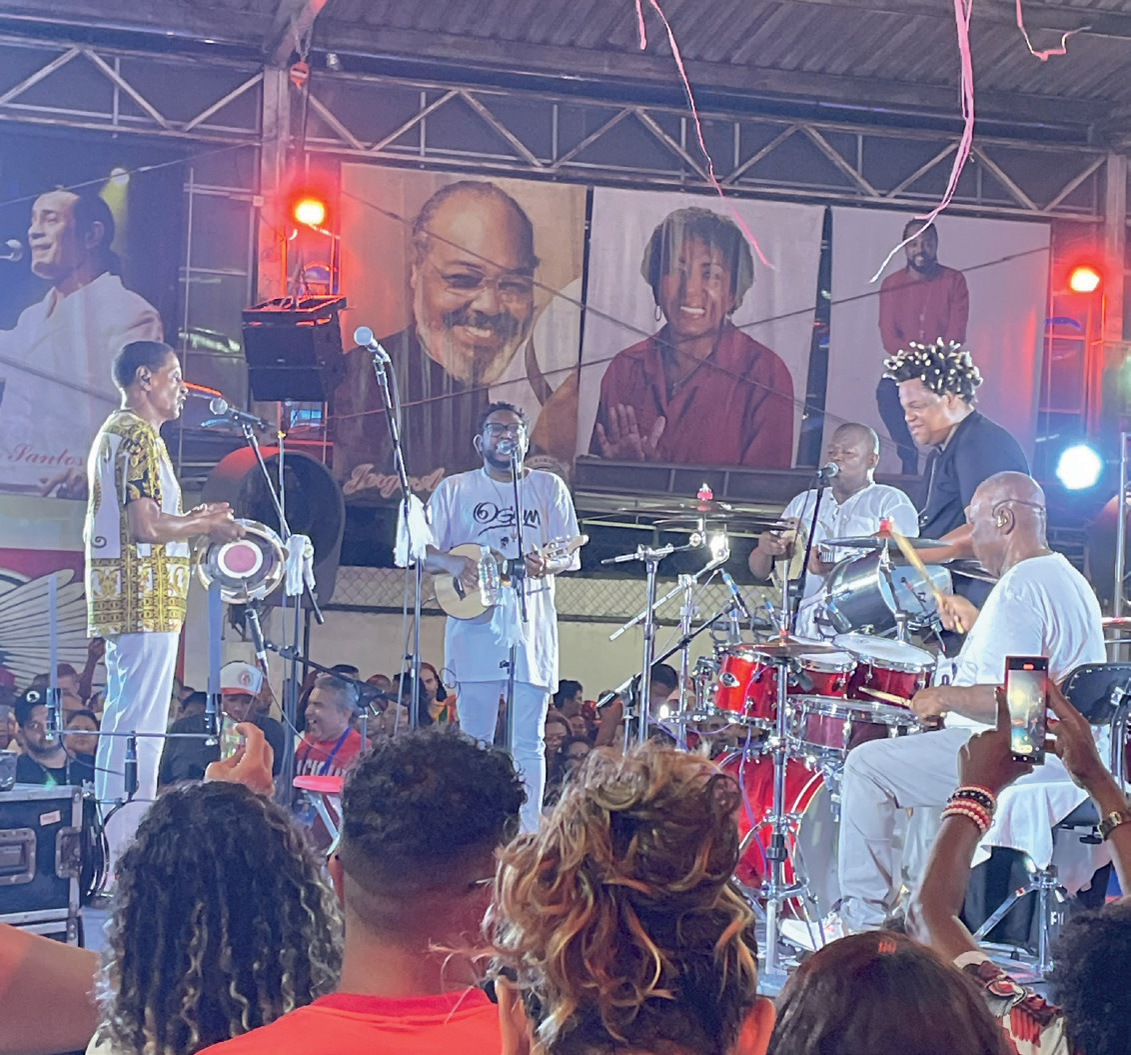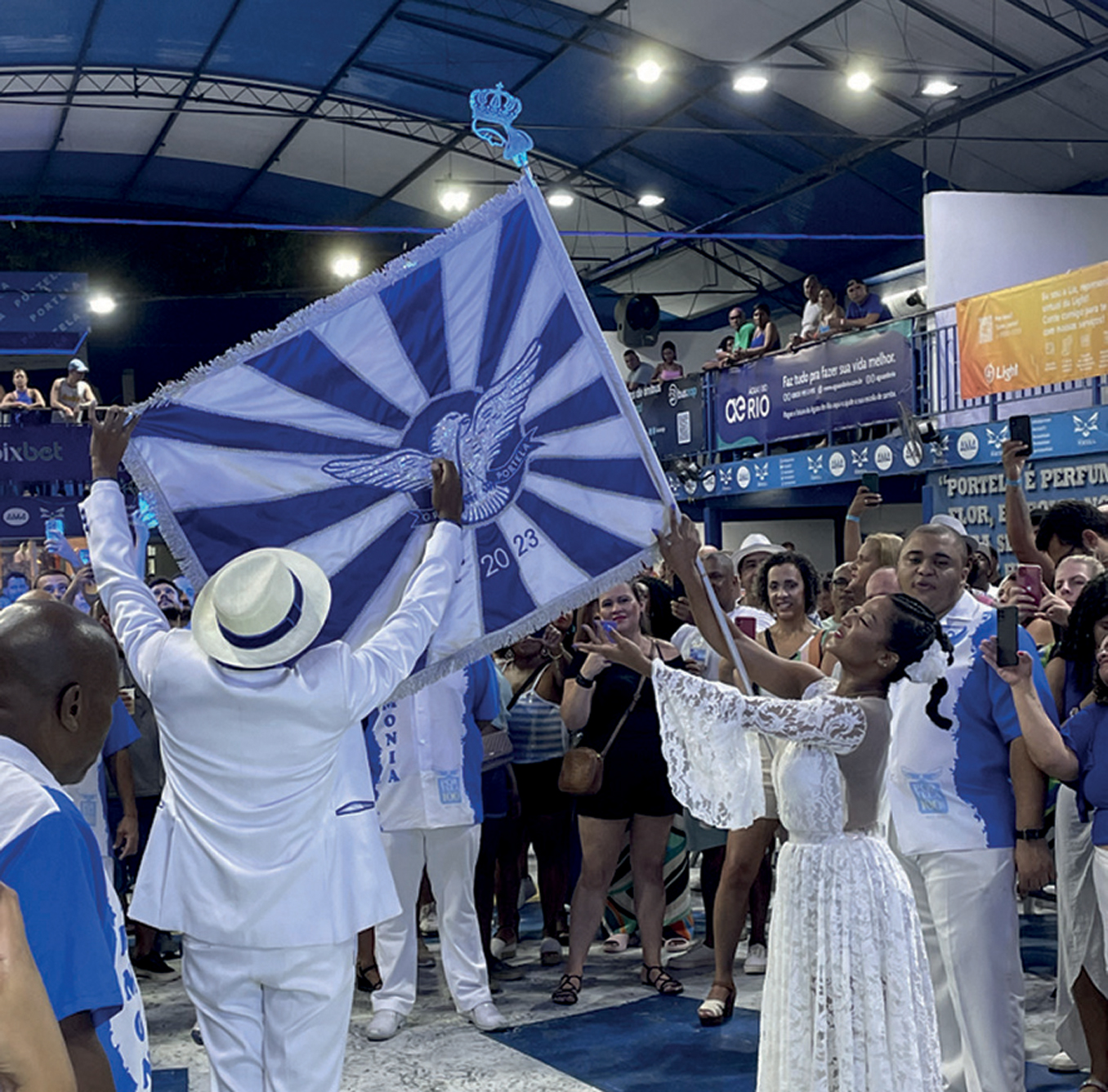
In January 2024 I had the pleasure of spending a few weeks in Rio de Janeiro with friends and colleagues. Each of us had our own reasons for the trip, but these all involved music of some kind. I was there to explore more of the Brazilian rhythms that I'd been researching and enjoying for so long, and to study with some of my favourite drummers and percussionists.
This was my third trip to Brazil and second time in Rio. But what made this trip special was that we were there in the lead up to Carnival, the world-renowned festival of music, dance, costumes and parades that happens just before Lent. Carnival is the pinnacle of months of rehearsals and preparation, but event tickets and accommodation are expensive, and only a handful of groups perform each night. For those wanting to get an insider's view of the samba scene, the weeks prior to Carnival can actually be better than the event itself. So, while the actual festival is a spectacle of epic proportions, we decided that we were better off going earlier to visit the samba schools, and perhaps getting a chance to play.
The tradition
On most weeknights preceding Carnival, each escola de samba (samba school) is allotted time for a technical rehearsal in the Sambódromo (Sambadrome), a 700-metre long samba stadium built in 1986. During Carnival, the 90,000 capacity stadium is full of devoted fans who often pay a pretty penny for tickets. But at technical rehearsals, spectators can roam freely amid food and drink vendors while watching their favourite school rehearse.
The enredo, or theme, is exactly that: each school's show concept for that year. And the samba-enredo is the song that accompanies the show. The enredos typically focus on Brazilian topics, such as national characters, history, places, folklore, and cultural or societal issues. Competition to compose a school's samba-enredo is fierce, as that song becomes the anthem of the entire community for that year and beyond. At Carnival, the song is played non-stop for over an hour while the group parades down the Sambódromo.
One of the easiest schools for foreigners to visit is Salgueiro, as it is in a relatively safe and welcoming neighbourhood close to the areas in which tourists typically stay. If a visitor is a strong enough player, and shows a high level of commitment, they can potentially perform with the bateria (percussion section). We visited Salgueiro on a few occasions. First, this was essentially for a closed rehearsal. But if you know when they are rehearsing, you can quietly sit on the sidelines and watch. A few nights later, we went back to Salgueiro for an ensaio geral (general rehearsal), though this is a far cry from any ‘rehearsal’ you're likely to experience. Rather, it's a show and party that is ticketed and open to the public.
Each school's home rehearsal space, or quadra, features bars and kitchens for patrons to enjoy beers, cocktails and salgados, the various salty fried snacks. These events typically start around 9 or 10pm, before the samba-enredo for that year is presented. The night then descends further into party mode as the group performs many of the school's older samba-enredos. Throughout, the stage is full of costumed dancers of all ages, and events typically run all night, not finishing until 5am or later.
A samba community
It is also common for one samba school to invite another to perform. Such was the case when we visited Salgueiro for their ensaio geral. One of the oldest and most decorated samba schools in history, Mangueira, was there to close the night.
 Fundo de Quintal at Cacique de Ramos, with Bira Presidente (left, yellow shirt)
Fundo de Quintal at Cacique de Ramos, with Bira Presidente (left, yellow shirt)
While all schools take the yearly competition extremely seriously, it is tempered with a friendly air, and most have a deep respect for one another. That said, they also have something to prove. The weather that night prevented numerous Mangueira members from getting to Salgueiro. However, through pride and sheer brute force, those that did make it still produced an enormous sound, with only half their number. Mangueira performed Salgueiro's 2024 samba-enredo in its own style, presumably out of a sign of respect.
Samba schools are inextricably linked to their local communities. While some groups, like Salgueiro, are welcoming of visitors and spectators, others are more protective of their culture. Mangueira is an example of this. We visited their quadra during an ensaio geral without difficulty, and had a wonderful evening. But if you are not from Mangueira, your chances of performing with them are pretty much zero. Members wear shirts that say ‘Cria do Morro’ (Child of the Hill), meaning they grew up on Mangueira hill. An American drummer living in London, no matter how enthusiastic, would never be permitted to wear one of these shirts.
Blocos
A few nights later, we visited Cacique de Ramos, which is not an escola de samba but a bloco (street band). As such, Cacique de Ramos does not compete in Carnival, but that doesn't make it any less relevant. Blocos are a fundamental element of samba culture, and Cacique de Ramos is arguably the most important of these groups, which typically open or close the Carnival.
Founded in 1961, Cacique de Ramos (an official landmark of Rio's cultural heritage) is considered the ‘Temple of Samba’. In 2012, Mangueira's enredo was all about Cacique de Ramos. It was here that the group Fundo de Quintal was formed and invented new instruments. Essentially, they created the pagode, a sub-genre of samba played around a table with fewer and smaller instruments. We were lucky enough to be at Cacique when Fundo de Quintal themselves were performing with one of their surviving original members: Bira Presidente, a pioneer of the instrument pandeiro.
Final preparations
After Fundo de Quintal wrapped up, we headed to Portela, which, founded in 1923, is an even older and more decorated escola than Mangueira. They were hosting their own ensaio geral, which, tonight, featured a ceremony in which the 2023 flag was retired and the 2024 flag was introduced. As the bateria thundered away, supporting the harmony and lyrics of the school's samba-enredo, the flag was presented by the primeiro casal (first couple), comprising the mestre sala (master of ceremonies) and porta bandeira (flag bearer).
 Portela's primeiro casal with the 2023 flag
Portela's primeiro casal with the 2023 flag
While the samba school tradition is deeply rooted in community spirit, and most of the members and fans are from that community, it is not unheard of for the primeiro casal, rainhas (queens) and other lead dancers to be freelancers who perform with a number of schools throughout their careers, much like professional athletes. Once the 2024 flag was presented, the school's lead passista (dancer) took her place at the front of the procession as dancers of every age, from oldest to youngest, made their way to the front. While this was no doubt part of the show, it was very clear that the dancers, especially the younger ones, were being judged with a sharp eye by the passista, who, like a coach, was gauging their preparedness for the upcoming performance at Carnival.




